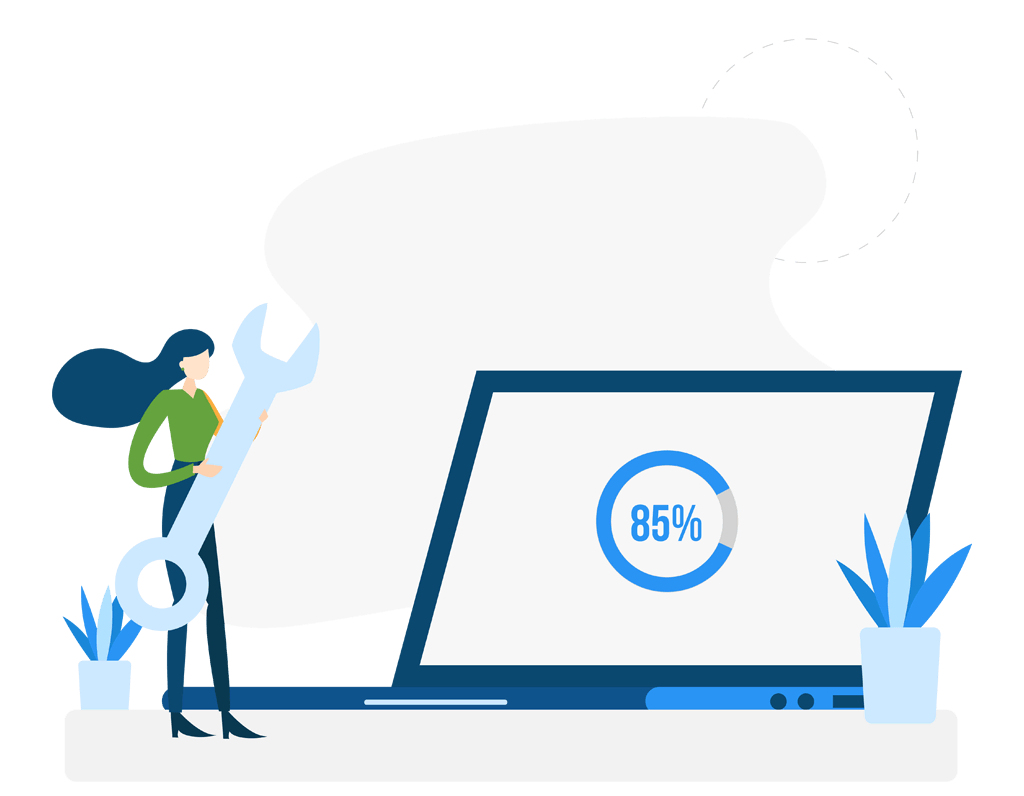Should engineering design professionals complete skill assessments?
Skill assessments have become popular tools for many organizations, particularly during the hiring process — 82% of companies now use some form of pre-employment skill test. Unlike resumes and in-person interviews, skills gap assessments offer an objective and standardized method for measuring skills. The assessments provide clear scores, ratings, and analyses that highlight strengths and weaknesses.
But the uses for skills gap assessments go far beyond evaluating candidates for a position. They can boost team productivity, help you improve your own performance on the job, and more. This especially applies to anyone working in engineering design, and even more so to CAD, CAM, and BIM users.
Software skill gaps are common in engineering design and can slow down workflows without teams even realizing they exist. And since the manufacturing and engineering industries will be experiencing a severe shortage of skilled workers over the next decade, it’s in everyone’s best interest to get ahead by taking skills gap assessments, whether you’re a CAD drafter or an engineering manager.
Here’s what you can do!

How you can use skills gap assessments to get ahead in engineering design

The idea of taking a skill assessment might sound intimidating, but it can help you advance your engineering career in a number of ways.
- Reinforce your resume. Get a head start on future employers, and take a skill assessment on your own! Hiring managers love to see numbers and results on resumes, and skill assessments make it easy to quantify your CAD software skills.
- Benchmark your skills. For personal development, it’s always good to start with a baseline. An effective skill assessment will give you an overall score on the test and then break down your results by specific skills like drawing, assemblies, and more.
- Improve before applying for jobs or taking a certification exam. Looking for a new role? Going for the Certified SOLIDWORKS Professional exam? Skill assessments can help identify your weakest areas so you know what to improve ahead of time.
- Better understand your design strengths. Skill assessments will show you where to improve, but they might also uncover your hidden strengths! If you’re a SOLIDWORKS sketching superstar, use that to your advantage.
- See how your results align with goals at work. If you’re striving to hit KPIs like reducing the number of ECOs, skills gap assessments can help you determine what might be holding you back so you can achieve your goals more quickly.
Ready to boost your skill set? Start testing your SOLIDWORKS skills for free with My Skills Analyzer »
How engineering design teams can use skills gap assessments to boost performance

Skill assessments can help professional CAD users get ahead, but they can be even more powerful for businesses and engineering design teams. Here’s how:
- Identify hidden skill gaps. This might seem obvious, but many times, skill gaps aren’t readily apparent. Taking skills gap assessments as a whole team can give engineering managers transparency on which areas need improvement or where they might need to hire extra talent.
- Uncover team inefficiencies. Engineering design teams sometimes rely on a “this is how we’ve always done it” attitude. But even seasoned CAD experts can waste design time if they’re using outdated methods when newer shortcuts exist within the software. Skill assessments put the spotlight on these inefficiencies so they can be corrected.
- Use results as KPIs. Skill assessment scores can work as key performance indicators for your team. For example, let’s say your design team completes a SOLIDWORKS skill assessment in Q1. You can have your team take the same test in Q2 and compare scores as a measurement of proficiency improvement or even training effectiveness.
- Pinpoint who’s struggling and who’s excelling. Skill assessments make it very clear which team members are highly proficient and who needs additional training. This makes it easy to provide the right opportunities and ensure everyone is on track for success.
- Build custom training for new hires. It’s good practice to use skills gap assessments in the hiring process, but also consider using them once you’ve hired your employees! The shortage of skilled workers across engineering sectors means that more businesses are hiring outside of typical requirements and conducting more on-the-job training. In these instances, skill assessments make it simple to establish a baseline for new hires. Then, you can develop a training program to build skills from there.
Sound like a plan? Test your design team, get the results, and go farther with SolidProfessor Skills Analyzer for Teams »
Give skill assessments a shot with SolidProfessor Skills Analyzer
The easiest way to get started with skill assessments for engineering design is by taking a SolidProfessor Skills Analyzer test. With this free, online, interactive tool, you can test SOLIDWORKS software skills on your own or as a team.

Skills Analyzer team results dashboard
When you complete a test, you’ll get your results in the Skills Analyzer dashboard. If you set up a group test for your team, you’ll be able to see every employee’s individual results and get an aggregate score. Plus, you’ll also get free, personalized course recommendations from the SolidProfessor Library based on your team’s results.
























